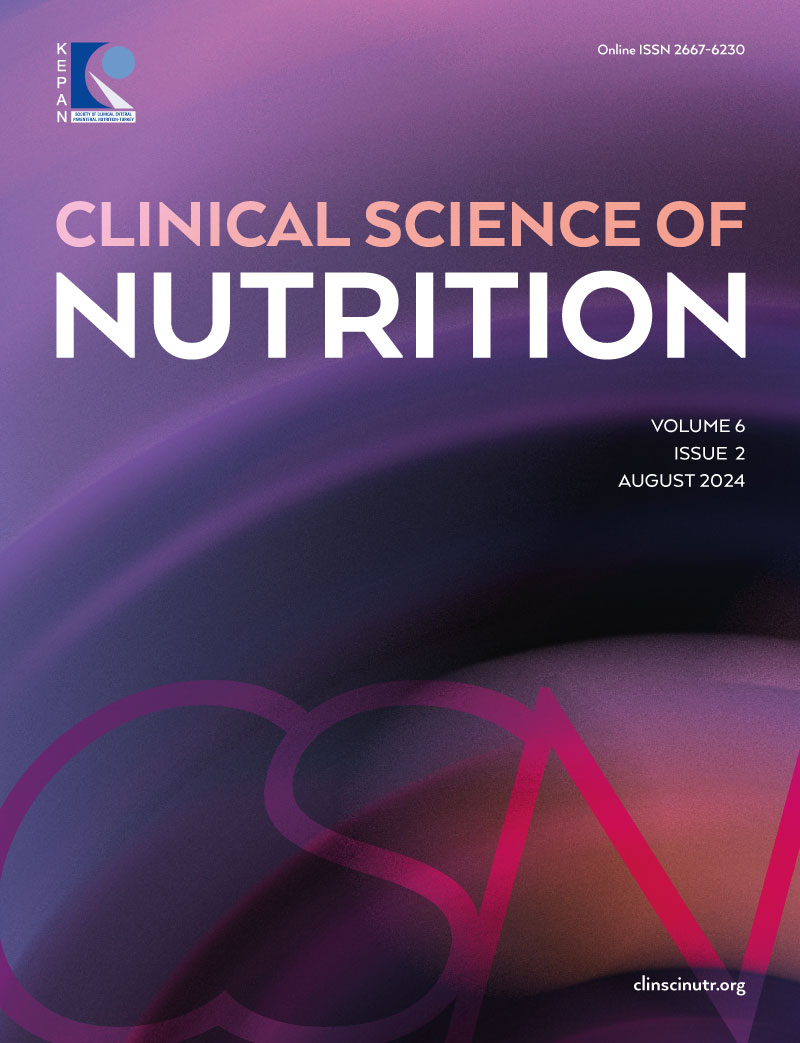Abstract
Malnutrition and cachexia are common in cancer patients. Malnutrition rates of cancer patients vary according to the location of the tumor. In esophageal cancer, severe cachexia and sarcopenia are seen at the time of diagnosis. The defense of nutritional therapy (NT) against cancer, especially gastrointestinal cancer, is very difficult. NT should start with the diagnosis of the disease. The aim of NT should be to prevent cancer cachexia, related complications, and mortality. In Türkiye, squamous cell esophageal cancer is often seen, especially due to dietary habits (hot drinks, meat-based diet low in vegetables). This is a case report of a 55-year-old male patient who had lots of challenges during the nutritional management after esophageal cancer surgery. The patient’s complaints did not improve after neoadjuvant therapies and minimally invasive esophagectomy (MIE) was performed. Inflammation and fistula were seen after major abdominal surgery. As long as the fistula and drainage were continued, parenteral nutrition (PN) remained the only option for NT allowing the bowel to rest in the presence of a fistula. In case of contraindication to oral or enteral nutrition (EN), PN was started on day 6 of MIE. Since it was thought that oral or EN could not be started for more than 10 days, a central catheter was placed, and the patient was fed with CPN (central parenteral nutrition). After the insertion of a stent and a nasojejunal (NJ) tube, EN combined with CPN could be applied. Because of anastomotic leakage, oral nutrition couldn’t be continued. Short-term peripheral parenteral nutrition (PPN) therapy was continued until the leakage stopped. The patient was discharged with oral and oral nutritional supplements. Two years after the MIE, no significant difference from previous radiological reports was found and there were no problems with oral nutrition.
Keywords: Enteral, esophagus cancer, nutrition, parenteral
References
- Cools-Lartigue J, Spicer J, Ferri LE. Current status of management of malignant disease: current management of esophageal cancer. J Gastrointest Surg. 2015;19:964-972. https://doi.org/10.1007/s11605-014-2701-3
- Rubenstein JH, Shaheen NJ. Epidemiology, diagnosis, and management of esophageal adenocarcinoma. Gastroenterology. 2015;149:302-317. https://doi.org/10.1053/j.gastro.2015.04.053
- Reim D, Friess H. Feeding challenges in patients with esophageal and gastroesophageal cancers. Gastrointest Tumors. 2016;2:166-177. https://doi.org/10.1159/000442907
- Mariette C, De Botton ML, Piessen G. Surgery in esophageal and gastric cancer patients: what is the role for nutrition support in your daily practice? Ann Surg Oncol. 2012;19:2128-2134. https://doi.org/10.1245/s10434-012-2225-6
- Arends J, Bachmann P, Baracos V, et al. ESPEN guidelines on nutrition in cancer patients. Clin Nutr. 2017;36:11-48. https://doi.org/10.1016/j.clnu.2016.07.015
- Thompson KL, Elliott L, Fuchs-Tarlovsky V, Levin RM, Voss AC, Piemonte T. Oncology evidence-based nutrition practice guideline for adults. J Acad Nutr Diet. 2017;117:297-310.e47. https://doi.org/10.1016/j.jand.2016.05.010
- August DA, Huhmann MB, American Society for Parenteral and Enteral Nutrition (A.S.P.E.N.) Board of Directors. A.S.P.E.N. clinical guidelines: nutrition support therapy during adult anticancer treatment and in hematopoietic cell transplantation. JPEN J Parenter Enteral Nutr. 2009;33:472-500. https://doi.org/10.1177/0148607109341804
- Guerra RS, Fonseca I, Sousa AS, Jesus A, Pichel F, Amaral TF. ESPEN diagnostic criteria for malnutrition - A validation study in hospitalized patients. Clin Nutr. 2017;36:1326-1332. https://doi.org/10.1016/j.clnu.2016.08.022
- Peter JV, Moran JL, Phillips-Hughes J. A metaanalysis of treatment outcomes of early enteral versus early parenteral nutrition in hospitalized patients. Crit Care Med. 2005;33:213-220. https://doi.org/10.1097/01.ccm.0000150960.36228.c0
- Ubels S, Verstegen MHP, Rosman C, et al. Anastomotic leakage after esophagectomy for esophageal cancer: risk factors and operative treatment. Ann Esophagus 2021;4:8. https://doi.org/10.21037/aoe-2020-18
- Berger MM, Chiolero RL. Enteral nutrition and cardiovascular failure: from myths to clinical practice. JPEN J Parenter Enteral Nutr. 2009;33:702-709. https://doi.org/10.1177/0148607109341769
- Villet S, Chiolero RL, Bollmann MD, et al. Negative impact of hypocaloric feeding and energy balance on clinical outcome in ICU patients. Clin Nutr. 2005;24:502-509. https://doi.org/10.1016/j.clnu.2005.03.006
- Muscaritoli M, Arends J, Bachmann P, et al. ESPEN practical guideline: Clinical Nutrition in cancer. Clin Nutr. 2021;40:2898-2913. https://doi.org/10.1016/j.clnu.2021.02.005
Copyright and license
Copyright © 2024 The author(s). This is an open-access article under the terms of the Creative Commons Attribution License (CC BY) which permits unrestricted use, distribution, and reproduction in any medium or format, provided the original work is properly cited.










